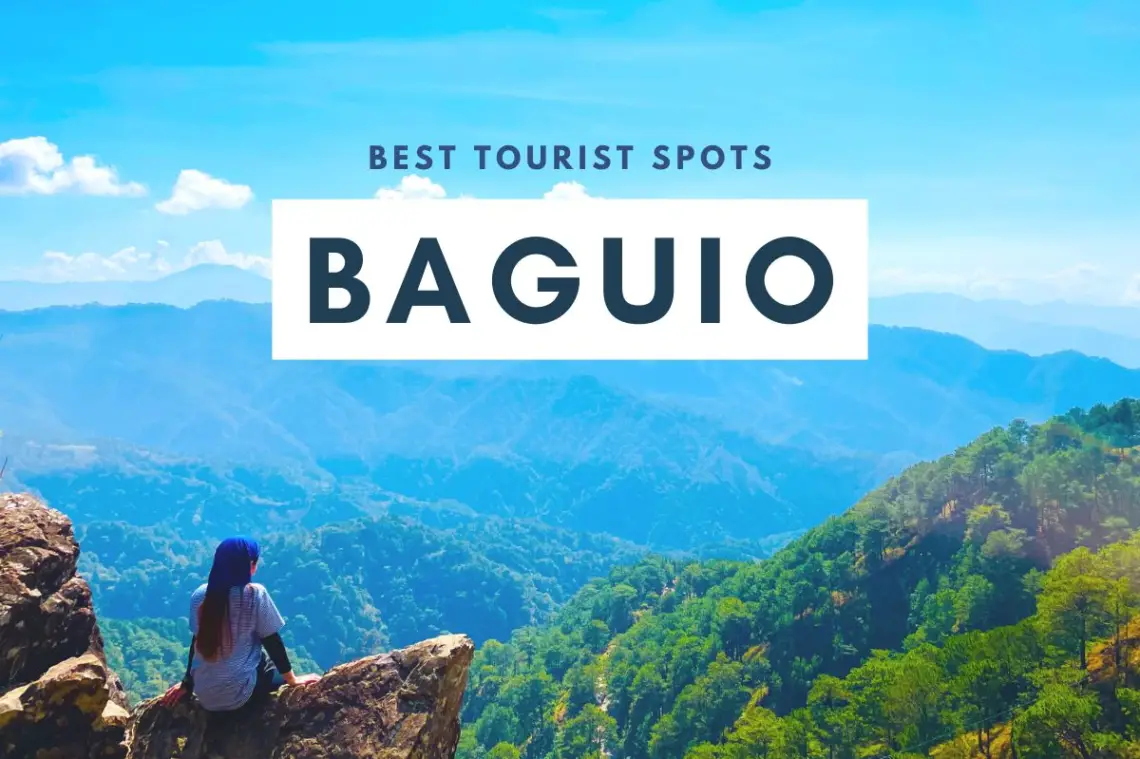
20 BEST Baguio Tourist Spots + Things to Do
Baguio City is one of the most popular tourist destinations in the country — especially during the summer months! Nestled in the picturesque mountains in the Cordillera Region, this city is known for its cool climate, fresh produce such as strawberries, cultural and heritage sites, and various cafes and restaurants that serve local delicacies.
It is also known as the “Summer Capital of the Philippines” and occasionally referred to as the “City of Pines” due to the abundance of pine trees in the city.
Over the years, the city has gone tremendous development as more establishments were built in the area. However, for many people visiting here is still as amazing as ever, maybe even more because of the new attractions — not to mentions its snap-worthy areas.
Book your tours in Baguio via Klook:
- See the best of Baguio in this Baguio Joiners Tour.
- Visit the best insta-worthy places in a Baguio Instagram Walking Tour.
- Try the most famous delicacy in Baguio in this Baguio Strawberry Tour.
If it’s your first time visiting Baguio City and you’re wondering what to do, we’ve got you! In this guide, we’ll tell you the best Baguio tourist spots and things to do.
Contents
- 1. Burnham Park
- 2. Mines View Park
- 3. La Trinidad Strawberry Farm
- 4. Tam-Awan Village
- 5. Camp John Hay
- 6. BenCab Museum
- 7. Baguio Botanical Garden
- 8. The Mansion and Wright Park
- 9. Mirador Heritage and Eco Park
- 10. Diplomat Hotel
- 11. Bridal Veil Falls
- 12. Baguio Public Market
- 13. Igorot Stone Kingdom
- 14. Colors of StoBoSa
- 15. Mount Kalugong
- 16. Take a stroll at Session Road
- 17. Enjoy Baguio’s delicacies
- 18. Bargain hunting at Baguio Night Market
- 19. Buy pasalubong at Good Shepherd Convent
- 20. Witness the Panagbenga Festival
- How to get to Baguio City
- Where to stay in Baguio
- 2 Days Itinerary in Baguio
- What to read next:
1. Burnham Park
A trip to Baguio wouldn’t be complete without a visit to Burnham Park, often regarded as the heart and soul of the city. Named after the American architect Daniel Hudson Burnham, this urban oasis offers a place to relax and enjoy outdoor activities.
Stroll along the pathways, rent a boat to paddle on the serene man-made lake, or rent a bike to explore the park’s landscapes. Don’t forget to visit the Rose Garden and Orchidarium where you can see flower blooms (depending on season).
2. Mines View Park
Mines View Park is one of the most established tourist spots in Baguio. It offers breathtaking panoramic views of the mining town of Itogon and the surrounding mountains.
Aside from the sights, there are other touristy activities you can do here including donning traditional Cordillera attire, taking pictures with Saint Bernard dogs, and buying local snacks and souvenirs.
3. La Trinidad Strawberry Farm
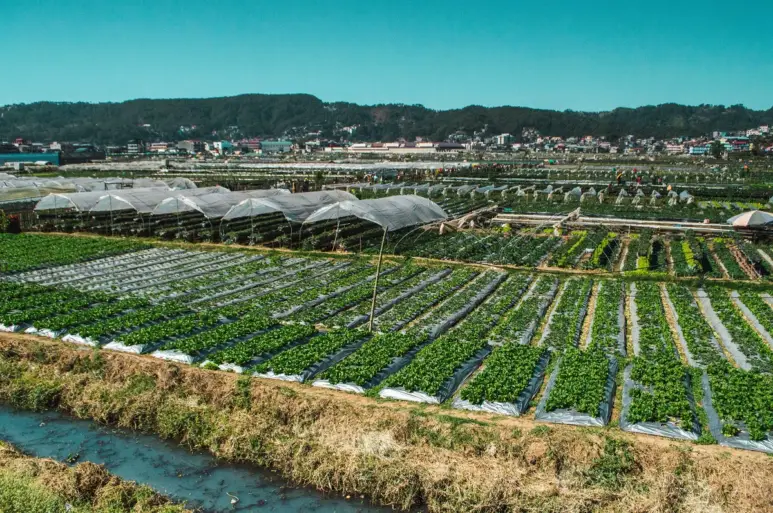
One of the best things to do in Baguio is harvesting your own strawberries at the La Trinidad Strawberry Farm!
This farm is a berry lover’s paradise. You can pick and pay strawberries during the strawberry-picking season (usually from November to May). Or visit other parts of the farm where a variety of vegetables are being grown for an educational experience.
Don’t forget to try the strawberry taho — one of the delicacies of Baguio City.
4. Tam-Awan Village
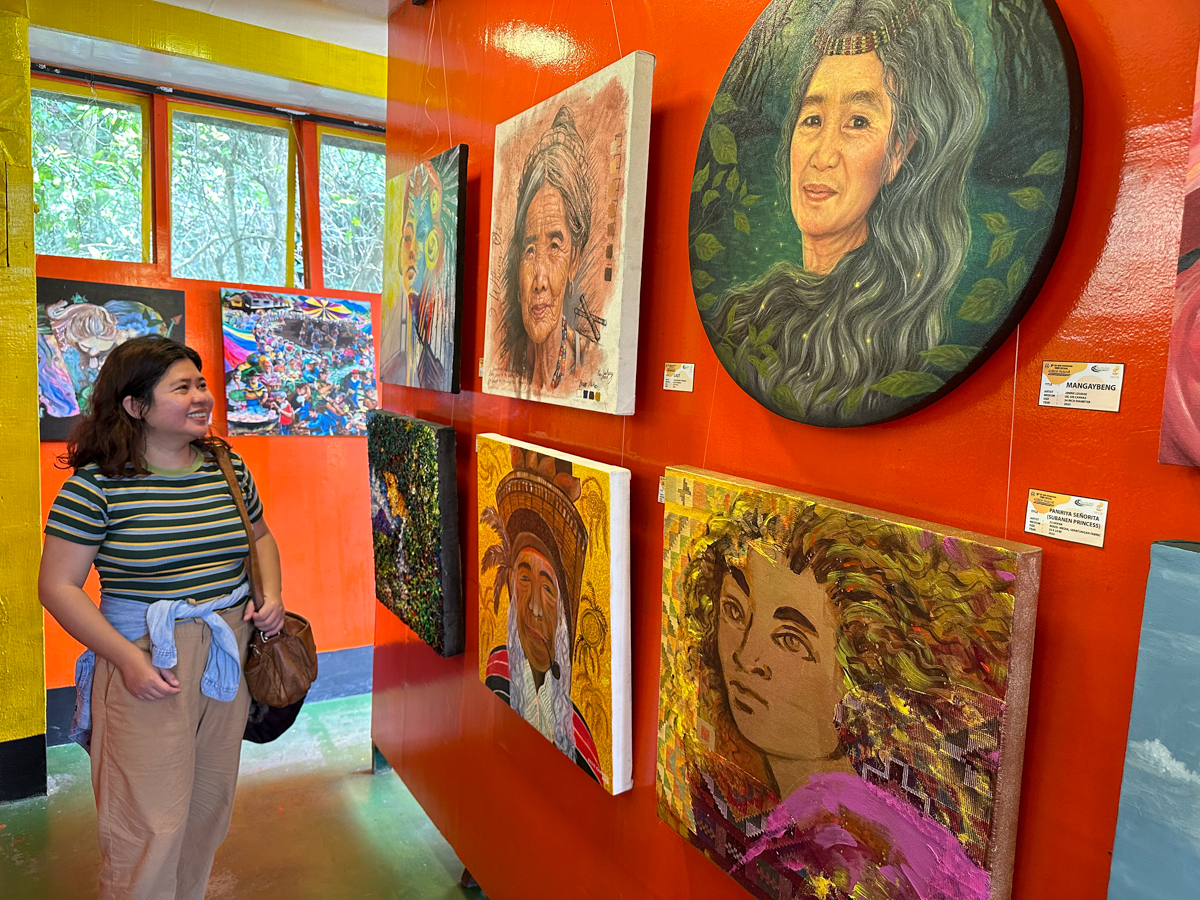
Learn more about the indigenous people of the Cordilleras when you visit the Tam-Awan village.
This living museum replicates a traditional Cordillera village. It features tribal huts, art galleries, and cultural performances. You can also partake in workshops on indigenous crafts and even try your hand at pottery.
Aside from cultural immersion, this is also one of the best Baguio tourist spots offering panoramic views of mountains and farms.
5. Camp John Hay
Camp John Hay is one of the most popular tourist spots in Baguio. It was once a rest and recreation facility for the United States Armed Forces and has since been transformed to a premier resort complex.
The main draw of Camp John Hay is its lush pine tree forests. It is reminiscent of the old Baguio City, before its widespread commercialization which resulted in forests being converted into commercial spaces.
Activities inside the camp include exploring its landscapes, visiting historical buildings, and doing various outdoor activities including golfing, hiking, and ziplining. You can also visit the Bell House, a museum offering insights into the history of the camp. Or the Cemetery of Negativism — one of the unique places to visit in Baguio that reminds visitors to let go and transform the past.
6. BenCab Museum
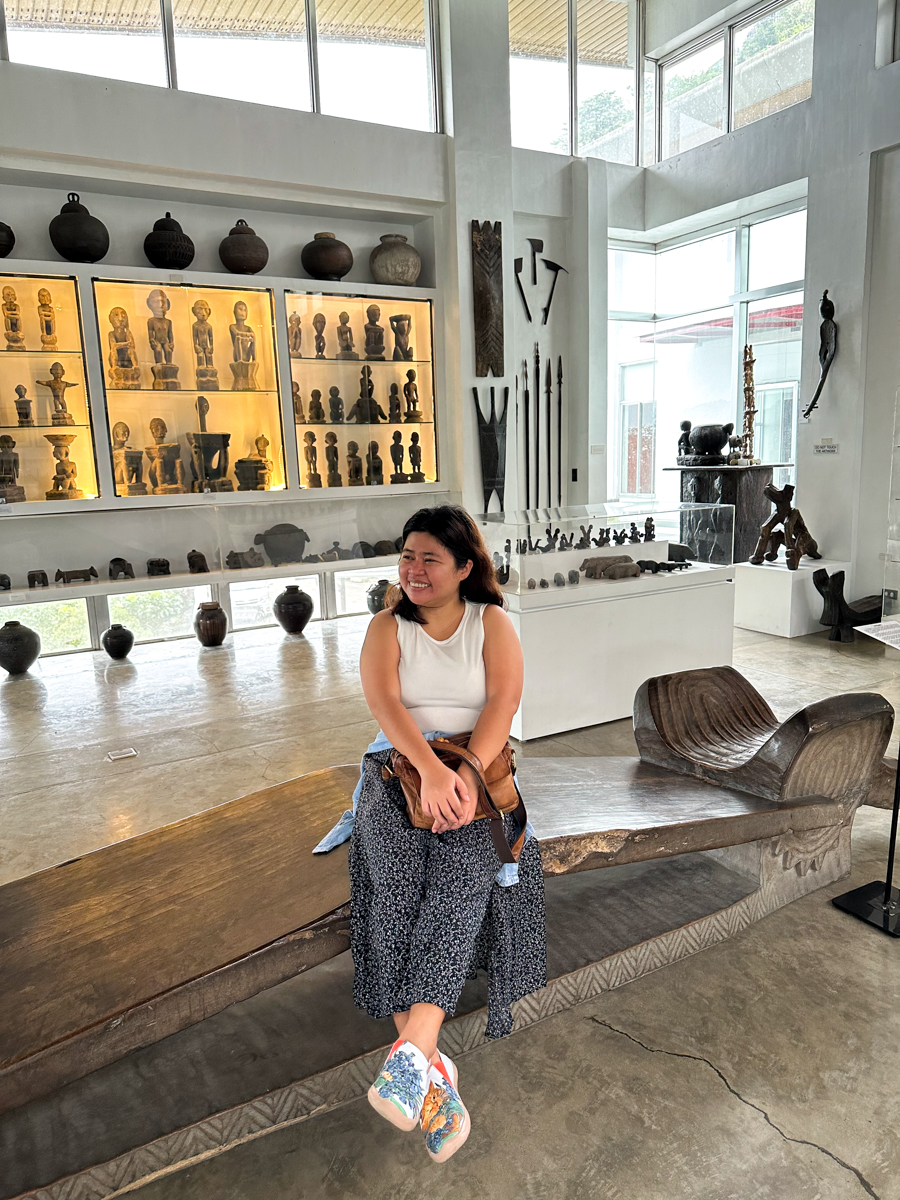
BenCab Museum is one of the most-visited spots near Baguio City, not just for its artistic value but also its snap-worthy aesthetics. If you love taking photos, then you shouldn’t miss this one.
Located in Tuba, Benguet, this museum is the brainchild of national artist Benedicto Cabrera (BenCab). It showcases a vast collection of contemporary and indigenous Philippine art.
Aside from the art gallery, the museum complex is also home to a mini-forest and organic gardens where you can relax and commune with nature and a café where you can indulge in delectable meals while enjoying the artistic ambiance and stunning views of the surrounding mountains.
7. Baguio Botanical Garden
Another must-visit tourist spot in Baguio is the Baguio Botanical Garden. Stroll around the different sections of the park and appreciate the surrounding pine trees, flower beds, and other vegetation. Plantitos and plantitas can also buy potted plants to take home!
You can also rent traditional katutubo attire for photos, buy souvenir in the stalls, and enjoy snack at the food stalls and other nearby restaurants.
8. The Mansion and Wright Park
The Mansion is a must-visit in Baguio for history-lovers. It is the official summer residence of the President of the Philippines. Although the public is not allowed to go inside, you can take photos of the building and outdoor gardens.
Head to the nearby Wright Park afterwards for the opportunity to try horseback riding and have your picture taken with the famous Baguio ponies.
9. Mirador Heritage and Eco Park
One of the newest tourist spots in Baguio, Mirador Heritage and Eco Park is a 5-hectare park offering breathtaking views of the city and several attractions aimed at promoting mental and spiritual nourishment.
See the Lourdes Grotto, the Mirador Rock Garden, and the Arashiyama Bamboo Grove which is inspired by the same grove in Japan. And of course don’t forget to visit the Mirador Peace Memorial with its iconic torri with overlooking views — one of the most photographed spots in the city in the recent times.
After exploring the park’s attractions and IG-worthy areas, head to their café to enjoy pastries and drinks with a view.
10. Diplomat Hotel
Interestingly, one of the most famous attractions in Baguio City is a “haunted house” — the Diplomat Hotel. This abandoned structure was once a rest house for Dominican friars and then a military garrison and war prison during the WWII. In the 1970s, it was converted into a hotel. It ceased operations once the owner died.
The Diplomat Hotel is often considered one of the most haunted places in the Philippines. Currently, the hotel is closed to the public but you are still welcome to take pictures from outside and appreciate the views of the city from its hilltop location.
11. Bridal Veil Falls
Located a short drive from Baguio, Bridal Veil Falls is a lovely roadside attraction. Named for its cascading waters that resemble a bridal veil, this waterfall is a peaceful spot for picture taking, swimming, and enjoying the cool mountain air.
You can visit the Bridal Veil Falls if you drive along Kennon Road. Cross the hanging bridge to take a closer look at the falls.
There is no entrance fee here but there is a donation box at the bridge entry.
12. Baguio Public Market
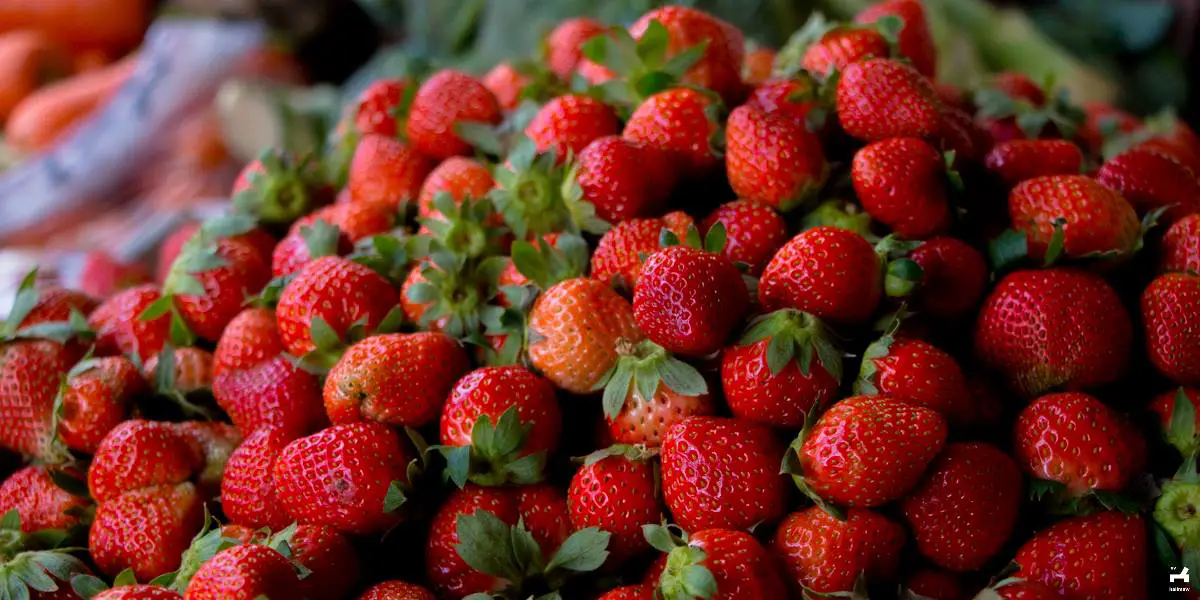
No visit to Baguio is complete without exploring the vibrant Baguio Public Market. This bustling market is a treasure trove of local products. You can buy cheap fresh produce grown in the nearby mountains, woven textiles, and wood carvings.
It’s an excellent place to pick up souvenirs and savor local snacks like strawberry jam, peanut brittle, and ube (purple yam) products.
13. Igorot Stone Kingdom
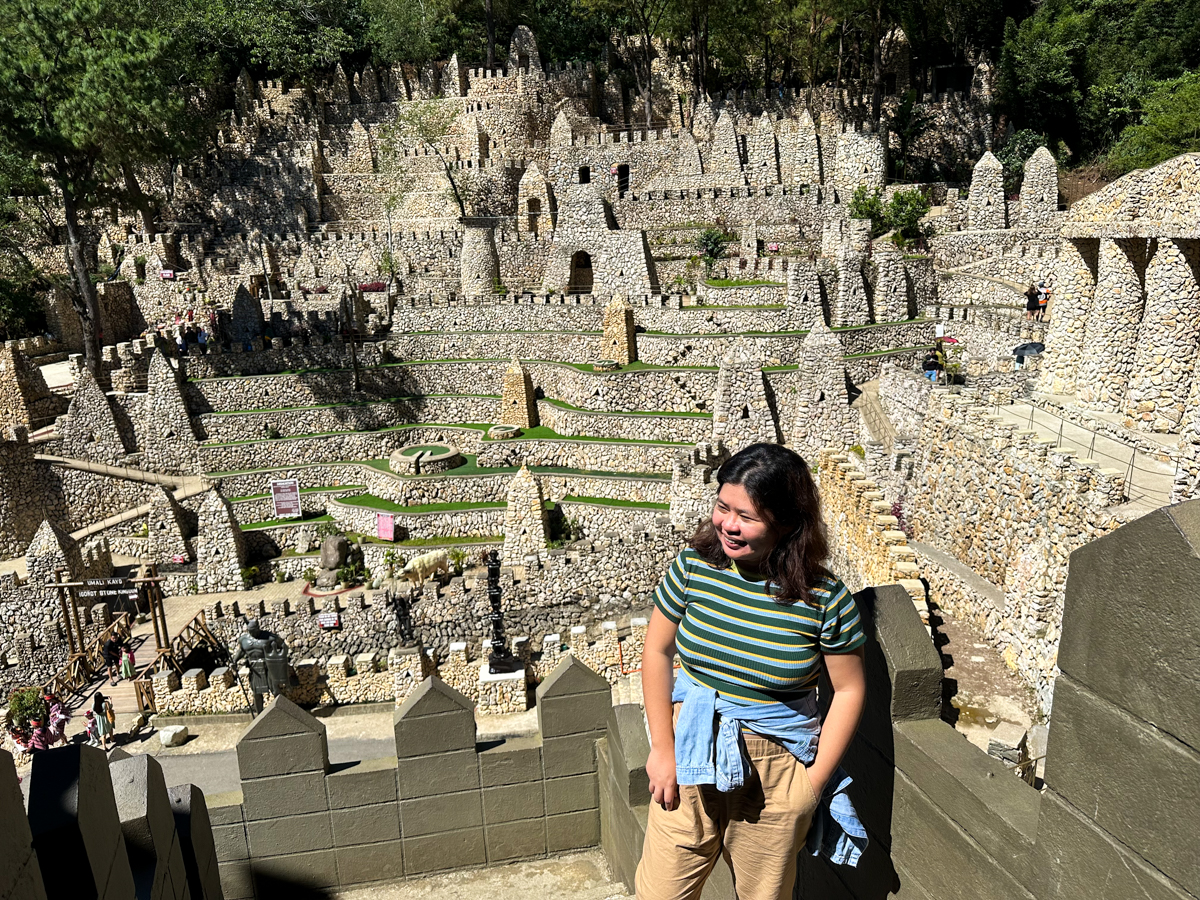
Opened in 2021, the Igorot Stone Kingdom is one of the newest Baguio tourist spots to visit. It is a theme park based on the legend of Sab-angan, an Igorot Kingdom in the past.
The park showcases the indigenous life in the Cordilleras through its amphitheater-like stone walls, stone houses, and other displays. The view from the top areas offers a view of the surrounding valley and the sunset.
14. Colors of StoBoSa
One of the newest attractions accessible via Baguio City is the Colors of StoBoSa (officially known as StoBoSa Hillside Homes Artwork).
It is a hillside community located in La Trinidad, where houses have been painted in various colors to create a mural. The mural encompasses three sitios in the barangay including Stonehill, Botiwtiw, and Sadjap (hence the term “StoBoSa”). It is considered the country’s first community artwork.
This tourist attraction can be visited on the way to the strawberry farm. Head to the bridge for the best spot to take pictures.
Pro Tip: Parking spaces are limited, so if you’re bringing your car it’s best to go on weekdays.
15. Mount Kalugong
So far, we’ve covered the usual tourist attractions in Baguio City. If you’re looking for something new, then check out Mount Kalugong in La Trinidad.
Commuting here is easy since you only need to ride the same jeepney that goes to the strawberry farm. Ask the driver to drop you off at Mount Kalugong and then hike for 30 minutes to the eco-park. Once there, you’ll reach rock formations with a pleasant view of the town below and a café called Kape-An where you can enjoy pastries and brewed coffee while enjoying the view.
16. Take a stroll at Session Road
When you’re in Baguio, one of the things you should do is take a leisurely stroll along Session Road, the city’s bustling commercial and entertainment district.
This lively street is lined with restaurants, cafes, bars, boutiques, and souvenir shops. It’s the perfect place to experience the city’s vibrant urban life, enjoy a cup of freshly brewed coffee, or savor local delicacies.
17. Enjoy Baguio’s delicacies
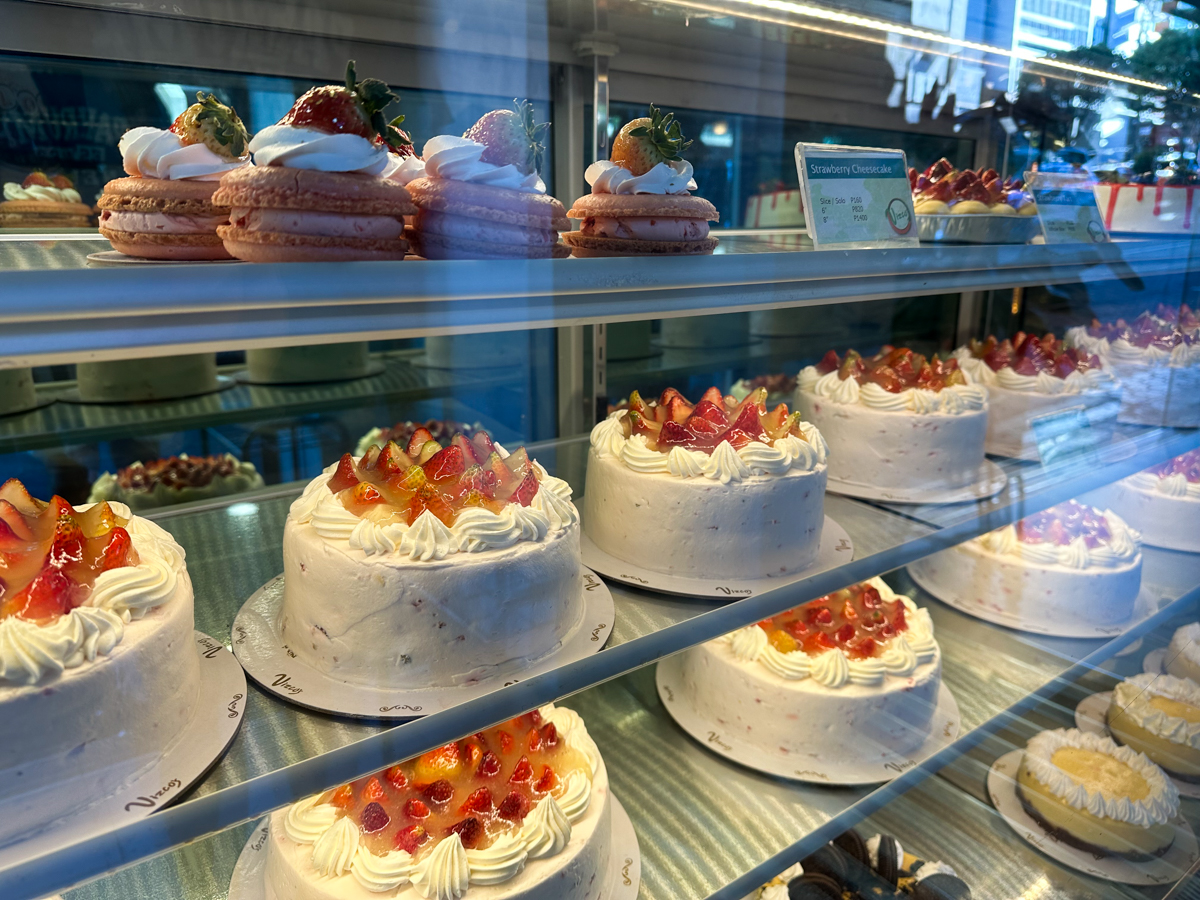
Baguio is a haven for food enthusiasts, offering a range of local and international dishes.
Be sure to sample fresh strawberries, as well as strawberry-flavored taho. Other local favorites include vegetarian dishes at Oh My Gulay, pinikpikan and other local dishes at Father’s Daughter Restaurant, strawberry cake from Vizco’s Bakeshop, and tsokolate batirol at The Manor or Café by the Ruins.
18. Bargain hunting at Baguio Night Market
One of the most popular things to do in Baguio is thrift shopping. Baguio’s Night Market is an open-air market located along Harrison Road. After sunset, it comes to life with an array of affordable clothing, accessories, toys, gadgets, and delicious street food. Be prepared to haggle for the best deals!
The Baguio Night Market is open from 9PM to 2AM daily.
19. Buy pasalubong at Good Shepherd Convent
For delicious pasalubong (souvenir) and treats, make a stop at the Good Shepherd Convent. This religious institution is known for producing some of Baguio’s most sought-after products — particularly strawberry jam, ube jam, peanut brittle, and more.
It’s worth noting that purchases made here support the charitable work of the nuns, particularly for educational funds for students enrolled at the Saint Louis University in Baguio.
Pro Tip: Head to Good Shepherd Convent early in the morning to avoid long lines. In normal hours, you need to get in line for around 30 minutes.
20. Witness the Panagbenga Festival
If your visit coincides with February, you’re in for a visual treat. The Panagbenga Flower Festival is Baguio’s annual flower extravaganza, featuring elaborate floats adorned with vibrant blooms, street dancing, and other cultural performances. The Panagbenga Festival, which means “season of blooming” in the Kankanaey language, originated as a symbol of the city’s resilience and commitment to rebuilding after a devastating earthquake in 1990. The month-long celebration is a testament to the city’s nickname as the “Flower Festival Capital of the Philippines.”
The Penagbenga Festival is one of the most popular festivals in the Philippines. It’s a must-see tradition for both locals and foreign tourists alike.
How to get to Baguio City
Baguio City is the capital of Benguet Province. From Manila, it will take at least 4 hours (up to 6 hours) to get there depending on your route.
Genesis Transport and Victory Liner buses offer a direct trip from Pasay or Cubao to Baguio. Pangasinan Solid North Transit also offers P2P buses from PITX or Cubao to Baguio.
Book your bus ticket from Manila to Baguio here.
Where to stay in Baguio
There are different hotels, transients houses, and Airbnbs you can book in Baguio City. If you’re looking for a place with convenient location, we recommend looking for an accommodation along Session Road or near Burnham Park.
Here are some recommended Baguio hotels:
- Luxury: The Manor at Camp John Hay
- Mid-range: The Forest Lodge at Camp John Hay | Microtel by Wyndham Baguio
- Budget: City Center Hotel
2 Days Itinerary in Baguio
Here’s a sample 2 days itinerary in Baguio for weekend road trips.
| Day 1 | Explore La Trinidad – Strawberry Farm – Colors of StoBoSa Lunch Burnham Park BenCab Museum Dinner along Session Road Thrift at Baguio Night Market |
| Day 2 | Baguio tourist spots – Mines View Park – Good Shepherd Convent – The Mansion – Wright Park – Baguio Botanical Garden Lunch at restaurant of your choice Camp John Hay |
That concludes our guide on the best Baguio tourist spots and things to do! Do you have other recommendations? Let us know in the comment section below!
What to read next:
Planning to visit Baguio City? You might be interested in these:
- Best Baguio Tourist Spots + Things to Do
- Igorot Stone Kingdom
- Best Baguio Hotels (From Budget to Luxury)
- Tudor in the Pines: IG-worthy stay in Baguio
Interesting spots near Baguio City:

Katherine Cortes is a long-time backpacker and a freelance writer/editor. She likes beaches, snorkeling trips, and relaxing staycations (preferably with bath tubs!).




3 Comments
Hermes
Growing up in Baguio City, nestled among the picturesque mountains of the Philippines, provided me with a unique sense of home that I’ve carried with me throughout my life. The crisp mountain air, the scent of pine trees, and the vibrant culture of the city shaped my identity in profound ways. From exploring the bustling streets of Session Road to seeking solace in the serene beauty of Burnham Park, Baguio City was not just a place where I lived; it was a part of who I am. The memories of attending the Panagbenga Festival with family and friends, or enjoying steaming cups of strawberry taho on chilly mornings, are etched into my heart. The sense of community in Baguio City, where neighbors felt like extended family and strangers greeted each other with warm smiles, fostered a deep connection to my surroundings. Although life may have taken me far from the city’s embrace, the spirit of Baguio continues to reside within me, a constant reminder of the place I will always call home.
We miss you friend hahaha 😀
I’m attaching here the ingredients and recipe of the chee cheong fun at taman esplanad that ive been eating every twice a week.
Ingredients:
For Chee Cheong Fun:
250g rice flour
2 tablespoons tapioca flour
2 1/2 cups water
1/2 teaspoon salt
Vegetable oil for greasing
For Sweet Sauce:
3 tablespoons soy sauce
2 tablespoons hoisin sauce
2 tablespoons oyster sauce
2 tablespoons sesame oil
1 tablespoon sugar
1 cup water
1 tablespoon cornstarch mixed with 2 tablespoons water (for thickening)
For Fish Curry:
500g fish fillets (such as snapper or mackerel), cut into chunks
2 tablespoons vegetable oil
1 onion, finely chopped
3 cloves garlic, minced
1 tablespoon ginger, minced
2 tablespoons curry powder
1 can (400ml) coconut milk
1 cup water
Salt and pepper to taste
Chopped cilantro for garnish (optional)
Instructions:
Prepare the Chee Cheong Fun batter: In a mixing bowl, combine rice flour, tapioca flour, water, and salt. Whisk until smooth. Let the batter rest for 30 minutes.
Grease a large, shallow heatproof dish or a plate with vegetable oil. Pour a thin layer of the batter onto the greased dish. Steam over high heat for 5-7 minutes until set. Repeat with the remaining batter.
Once cooked, carefully roll up each piece of Chee Cheong Fun and slice into bite-sized pieces. Set aside.
Prepare the sweet sauce: In a saucepan, combine soy sauce, hoisin sauce, oyster sauce, sesame oil, sugar, and water. Bring to a simmer over medium heat.
Stir in the cornstarch mixture and cook until the sauce thickens, about 2-3 minutes. Remove from heat and set aside.
For the fish curry: Heat vegetable oil in a large skillet or pan over medium heat. Add chopped onion, minced garlic, and minced ginger. Sauté until fragrant and onions are translucent.
Stir in curry powder and cook for another minute until aromatic.
Add fish chunks to the pan and cook for 2-3 minutes until slightly browned.
Pour in coconut milk and water. Season with salt and pepper to taste. Bring to a simmer and cook for 8-10 minutes until the fish is cooked through and the curry has thickened slightly.
To serve, arrange the sliced Chee Cheong Fun on a plate. Drizzle with sweet sauce and ladle fish curry over the top. Garnish with chopped cilantro if desired. Serve hot and enjoy your homemade Chee Cheong Fun with sweet sauce and fish curry!
Katherine Cortes
Miss ko na chee cheong fun. 🙁 Lang malapit na malaysian restaurant dito sa’min tsaka wala sila mga ganyang street food haha. Pati yung teh tarik iba lasa.
Hermes
Mahirap hanapin yung ganyan recipe sa Pinas.. pati mga ibang locals dito sa KL ang alam sa Chee Cheong Fun is ung matamis lang na sauce and walang curry na option and mostly sambal ung partner. 😀 kaya medyo unique ung sa Taman Esplanad ang problem lang mahaba ung pila pag 9am to 10am.
Yung teh tarik ata sa pinas mostly indonesian style kaya iba lasa.